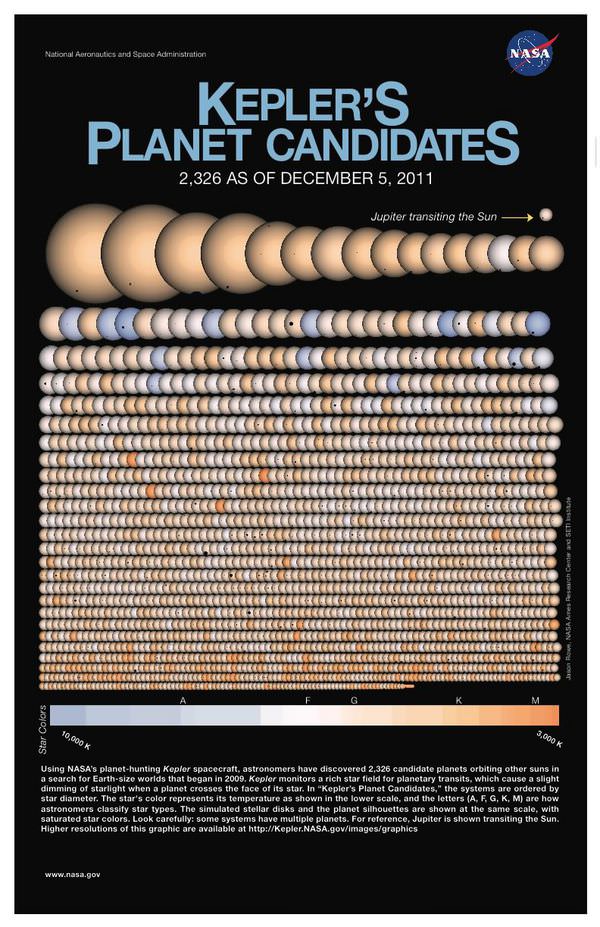That’s exactly the scenario shown by a mesmerizing animation called “Worlds” by Alex Parker — a single system containing 2299 multiple-transit planetary candidates identified to date by NASA’s Kepler space telescope, which is currently scrutinizing a field of view within the constellation Cygnus to detect the oh-so-faint reductions in brightness caused by planets passing in front of their stars.
The search requires patience and precision; it’s not really this crowded out there.
Alex’s animation takes 2299 candidates that have been observed multiple times, each shown to scale in relation to their home star, and puts them in orbit around one star, at their relative distances.
The result, although extravagantly impossible, is no less fascinating to watch. (I suggest going full screen.)
“The Kepler observatory has detected a multitude of planet candidates orbiting distant stars,” Alex writes on his Vimeo page. “The current list contains 2321 planet candidates, though some of these have already been flagged as likely false-positives or contamination from binary stars. This animation does not contain circumbinary planets or planet candidates where only a single transit has been observed, which is why ‘only’ 2299 are shown.
“A fraction of these candidates will likely be ruled out as false positives as time goes on, while the remainder stand to be confirmed as real planets by follow-up analysis,” Alex adds.
The white ellipses seen when the animation pulls back are the relative sizes of the orbits of Mercury, Venus and Earth.
At this time the Kepler mission has identified 2321 planetary candidates, with 74 exoplanets confirmed. See more on the Kepler mission here.
Animation: Alex Parker. Image: Kepler mission planet candidates family portrait (NASA Ames/Jason Rowe/Wendy Stenzel)

